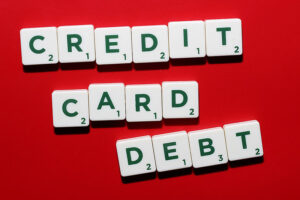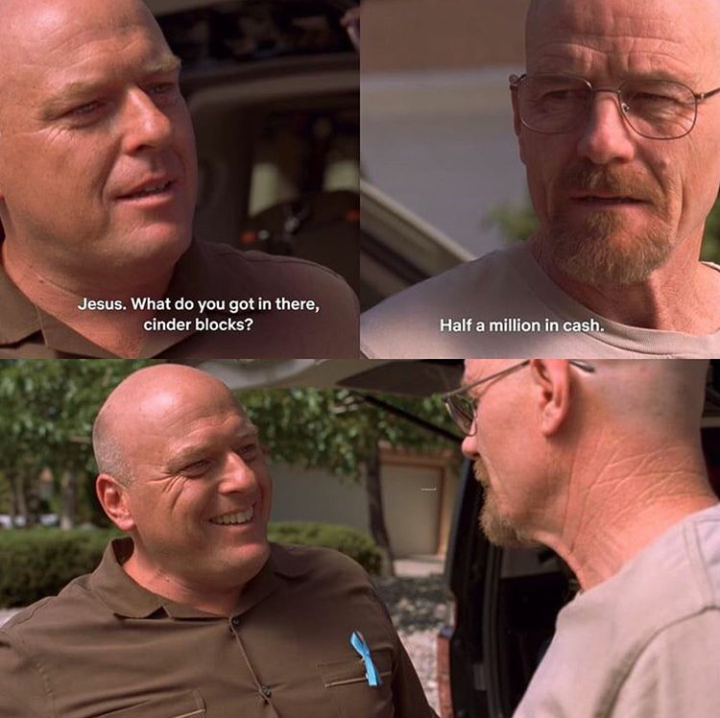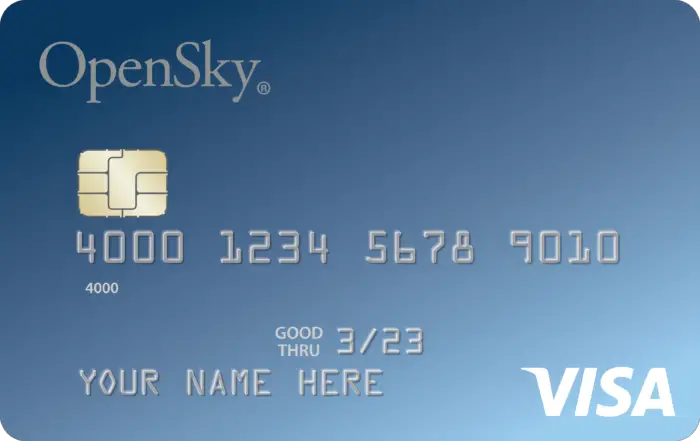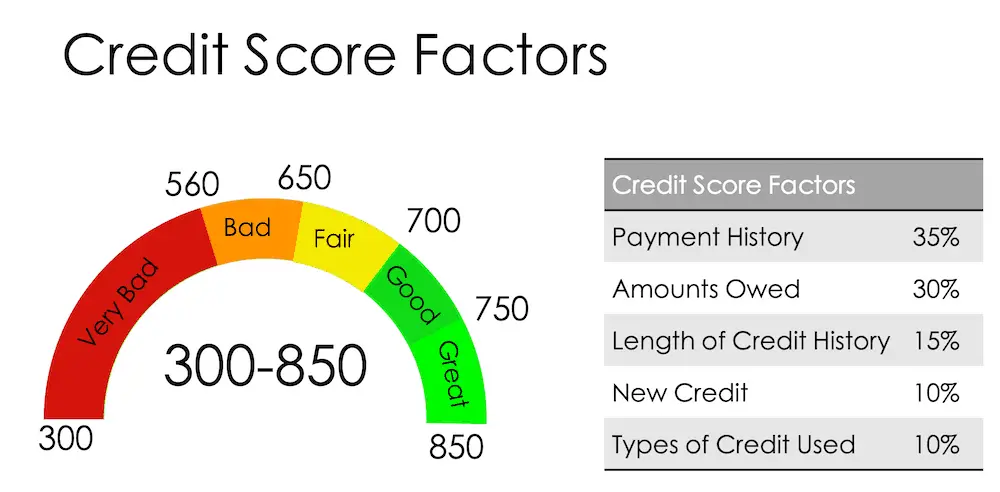How to Snowball Your Credit Card Debt Properly, And Why Snowballing Your Credit Card Debt is The Fastest Path to Being Debt Free!
Credit card debt, and debt as a whole, is something that millions upon millions of Americans struggle with in day to day life, this blog post will show you how to snowball your credit card debt properly, and of why psychologically, this is the fastest way to being debt free. Whether it’s due to overspending, problems with job loss and needing to use a credit card in order to pay day to day necessities, or trying to “rig the system” and suck out as many airline miles as possible, credit card debt is something that can seem to stick with you for life. The average American pays 19% in credit card interest on new accounts, and still is paying closer to 14% interest annually on aged accounts, with the median household credit card debt to date standing at over $16,000 in 2019. Credit card debt is one of the largest financial problems currently in existence, with interest rates on credit continuing to skyrocket to almost criminal levels. Credit card debt in the US is second in total debt per ca-pita only to the student loan and personal finance crisis, and this problem does not look to be going away anytime soon. Luckily, there is a way out of credit card debt, and there is a way to stay out of credit card debt, with just a few simple tricks and a little bit of discipline!
How You Can Get Out of Debt, and Stay Out of Debt, and How to Snowball Your Credit Card Debt to Do So!
Getting out of debt is difficult, staying out of debt is even harder. In the finance community, when advisors are discussing how to best pay down your debt, you may hear many of them say that you should pay off the debt with the highest interest rate first, and that by doing this you will save the most money overall. When looking at pure numbers, this theory would seem to hold true, in that if you pay off the higher interest rate debts first, you are paying less interest overall, and you are going to save money in interest down the road.
While this looks to be the case on the surface, when you actually get into the brass tacks statistics of the matter, snowballing your credit card debt is always going to be the better option. Snowballing your  debts means that you pay off the smallest debt first and work your way up the ladder. List your debts smallest to largest and begin to chip away at every single piece of debt until you have it all paid off. The reason for this lies in the basics of dopamine, and human behavior, as when really looking at it, finance is actually 80% behavioral, and only 20% knowledge. When you chip away at small debts first, you get a surge of dopamine and excitement in your brain that makes you want to hone in on the next smallest debt, and the next one, and the next one, continuing to keep pace with your strategy for getting debt free until you are actually debt free! Paying off your highest interest rate debts first has the best intentions in mind (paying less interest, which means saving money, which means being debt free faster) however it fails to take into account human behavior, and the fact that when looking at the hard facts behind this method, that its success rate pales in comparison to snowballing.
debts means that you pay off the smallest debt first and work your way up the ladder. List your debts smallest to largest and begin to chip away at every single piece of debt until you have it all paid off. The reason for this lies in the basics of dopamine, and human behavior, as when really looking at it, finance is actually 80% behavioral, and only 20% knowledge. When you chip away at small debts first, you get a surge of dopamine and excitement in your brain that makes you want to hone in on the next smallest debt, and the next one, and the next one, continuing to keep pace with your strategy for getting debt free until you are actually debt free! Paying off your highest interest rate debts first has the best intentions in mind (paying less interest, which means saving money, which means being debt free faster) however it fails to take into account human behavior, and the fact that when looking at the hard facts behind this method, that its success rate pales in comparison to snowballing.
Here’s What Snowballing Your Debts Would Look Like, How to Snowball Your Credit Card Debt in the Picture Perfect Way
Credit to Cafecredit.com for providing this image via Flickr Creative Commons. Link here to view the image.
Let’s say that you have the following debt on your books currently:
- Car Loan: $25,000
- Credit Card 1: $250
- Credit Card 2: $100
- Credit Card 3: $1000
- Payday Loan: $8750
- Student Loan: $48,000
- Personal Loan: $5000
For a total of $88,100 in debt. The best way for someone to get free from this mess is to list your debts like this, and attack accordingly:
- CC 2: $100
- CC 1: $250
- CC 3: $1000
- Payday Loan: $8750
- Car Loan: $25,000
- Student Loan: $48,000
| Related Posts |
|---|
From here, you would begin your plan of attack. Get rid of your $100 credit card first, which brings you to only 5 sources of debt (with such a low balance on this, you should be able to do this pretty quickly.) Now you are excited, hungry, you see that getting out of debt is possible as your pile shrinks and becomes slightly more manageable. You again attack your next smallest debt source, which is your $250 credit card balance, and are able to pay that off lock, stock and barrel with your next paycheck, leaving you with only 4 sources of debt. 2 more paychecks go by and you are able to pay down your next lowest balance, which is your $1000 credit card, leaving you with 3 debt sources. Your motivation is at a new level, you take a second job and begin driving for Uber on the side to make extra cash, until your payday loan is completely gone, and you have chipped away at your car loan. A year passes and you are now down to just a student loan balance of $10,000, which with your newfound motivation, is gone in another six months. This is what snowballing your debt looks like, why it works, and why motivation is the key to getting out of, and staying out of, debt. There’s just no way around it, snowballing your credit card debt is the best algorithm for success out there!
Now for the Hardest Part, Staying out of Debt, How to Snowball Your Credit Card Debt Totally!
Staying out of debt is, once again, the hardest part of the equation, but it can be managed if you attack this with the same discipline and determination that you attacked snowballing your debts with. There are a few tricks for staying out of credit card debt that you can very easily implement and that will allow you to remain debt free for a lifetime (should you seek to practice them in your day to day life.) They are as follows:
- Cut your credit cards in half and throw them away – if you don’t have credit cards…. you can’t rack up any more credit card debt, plain and simple. Also, you spend more when you use credit than if you pay with cash, as cash activates the pain receptors in the brain.
- Pay cash for everything – When you pay cash for everything, the statistics indicate that you actually spend 22% less, at everywhere from McDonald’s and the grocery store, to when you’re getting the oil change done on your car. You are more resistant to upsells, you are savvier with couponing, and you are in more pain when you spend money, in that cash activates the pain receptors in the brain in a way that using credit cards does not, leaving you to spend less and come out ahead at the end of the day.
- Live below your means – This one’s a no brainer, make sure that you are always in the green and never in the red, and that you always make more than you spend.
- Work your tail off – Your best wealth builder is your income, and the fastest way to make as much money as possible is to work, work, and work some more. Work your tail off, and the rest will take care of itself.
- For things you can’t pay cash for or that are impractical (gas pump for instance in the interest of time) use a debit card. But never use a credit card again.
Final Thoughts on the Subject of Debt, Staying Out of Debt, and Of How to Snowball Your Credit Card Debt Properly for Permanent Debt Relief!
Getting out of debt and staying out of debt is possible with the magic of snowballing your credit card debt and working as hard as possible. The good news is, once you’re finally debt free, and you can finally see the ending of the seemingly hopeless pit of despair, chances are you likely won’t want to go back, and that you’ll do whatever it takes to stay out of debt, thanks for reading!
Sources:
https://finance.fandom.com/wiki/Firm_Foundation_Theory
https://finance.fandom.com/wiki/Castle-in-the-Air_Theory
https://money.cnn.com/data/markets/
Disclaimer: The opinions and documentation contained within this article and on this blog are the sole property of inflationhedging.com and are not to be copyrighted or reproduced in any manner, else legal action within the rights of the United States legal code could be use to obtain recompense. All articles and blog posts are the sole opinions of the writers of the blog, and are not necessarily in line with what exactly will work for you, you should consult a CPA, Tax Professional, or Financial Professional to determine what exact financial needs are in line with your interests. Also, from time to time, certain links on this website will be used to generate affiliate commissions, in order to support the health and growth of our website, health and business.







[…] there’s been tons and tons of research on the subject actually spend 14% more money when he use a credit card versus if you use cash or debit card. He also goes on to say that if you do use cash in the least […]
[…] premiums at as much as $8,000 a pop, you can imagine how that can really start to snowball in a negative […]
[…] explain why compound interest is the most powerful force in the universe. I see that compound interest is the most powerful force in the universe, and that when taken into its extreme, the numbers […]